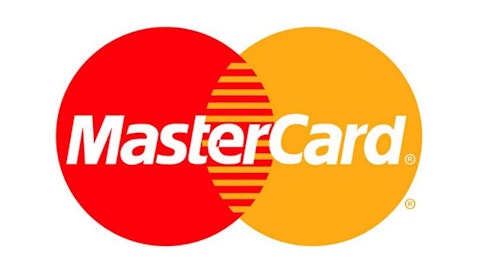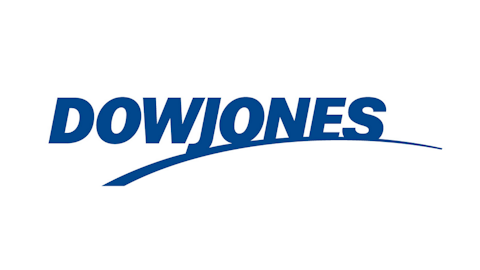American Express Company (NYSE:AXP) saw a 6.5% pullback last week, which was driven by a downgrade at Barclays PLC (ADR) (NYSE:BCS) due to valuation concerns. Barclays believes the recent run up by the stock, which is up more than 28% in the last 12 months, is a result of multiples expansion rather than fundamental growth. However, given the credit card company’s market-leading position, I think there is long-term growth buried in the company.
American Express Company (NYSE:AXP) is expected to grow EPS at an annualized 13% over the next five years, which puts its PEG ratio at an enticing 1.3. What’s more is that at only a 23% payout of earnings, American Express has room to up its 1.3% dividend yield in the future. The stock is trading at 18.7 times earnings, and Barclays PLC (ADR) (NYSE:BCS) admits this is a the low end of its historical average of 16 times to 18 times. Its 18.7 times P/E is also below the 20.8 times industry average.
Its merchant-services business has seen spending on cards grow at an annualized rate of nearly 25% from 1999 to 2010, then 28% in 2010, 15% in 2011 and 10% in 2012. American Express Company (NYSE:AXP) already has a strong position in the U.S. card-spending business and is also reaching out to international markets for growth.
Other tailwinds for the company include its strong management of credit. Delinquency rates improved nicely in 2011, 2012 and 1Q 2013. American Express Company (NYSE:AXP) also set record-low default rates in 2011, and this trend has continued so far in 2013.
A couple of notable credit-card competitors include Discover Financial Services (NYSE:DFS) and Capital One Financial Corp. (NYSE:COF). In the same research note that had Barclays downgrading American Express, the bank upgraded Discover, citing margin expansion as the catalyst. Barclays believes that Discover deserves a P/E multiple that is closer to American Express Company (NYSE:AXP), given the credit-card company has similar return on equity and growth metrics.
The thing about Discover is that it has managed to limp along for the past few years, presenting low-to-modest revenue growth. However, revenue is expected to increase 5% in both 2013 and 2014, as the credit-card company looks to emphasize a greater focus on higher quality credit. Discover has already managed to work losses down to only 2.1% of average loans as of 1Q, compared to 8.5% in 2010.
One initiative that Discover Financial Services (NYSE:DFS) is undertaking includes expanding its direct consumer finance and banking businesses, allowing it to move toward a full-service banking provider, which includes offering home equity loans and deposit accounts. These will come in addition to the student loan and mortgages it already offers.
Capital One Financial Corp. (NYSE:COF) has been on an acquisition spree of late, snatching up ING Direct in 2012, which boosted its deposits by some 75%. Then later on in 2012, Capital One bought HSBC Holdings plc (ADR) (NYSE:HBC)‘s U.S. credit-card portfolio, boosting its presence in the credit- card sector.
With its ING Direct acquisition, Capital One has leveled its portfolio between spenders and borrowers, which comes as a positive given consumers are looking to limit debt loads. However, with the rebounding economy, I believe it will be the credit-card operators that perform best, as opposed to deposit takers.
Pure purchasing play
One of the big competitors for credit cards has been the rise in debit card usage. Part of this is due to the credit crunch, where the availability of credit has decreased and customers look to de-leverage, leading to more debit purchases versus credit purchases. Two of the big benefactors of this transition have been Mastercard Inc (NYSE:MA) and Visa Inc (NYSE:V). As seen below, over the past five years the purchase volume for debit cards has risen 61% versus the 17% increase for credit cards.

Some of what MasterCard and Visa hope to use to drive future growth is payment processing opportunities in emerging markets. For Mastercard Inc (NYSE:MA) this includes its Mobile Money Partnership, which is seeking out opportunities in under-banked regions for completing secure transactions via mobile.
As well, both MasterCard and Visa Inc (NYSE:V) are looking to break into e-commerce, mobile payments and prepaid cards. For MasterCard specifically, the company is focusing on China. MasterCard has a partnership with China UnionPay to enter the personal consumption market, which is estimated to be a $450 billion market.





